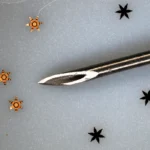Renowned Chemical Engineer Michael Tsapatsis Named Bloomberg Distinguished Professor

He creates molecular sieve membranes and catalysts to improve industrial efficiency and reduce waste, pollution.
Oil refineries and chemical manufacturing plants are known for their meandering pipes, billowing smokestacks, and fumes. They don’t make the best neighbors, but they do make many products that a modern lifestyle depends on.
Michael Tsapatsis, an innovative chemical engineer and materials scientist who joined Johns Hopkins University this month as a Bloomberg Distinguished Professor, is very familiar with the internal workings of these plants.
“A challenge for the U.S. chemical industry is to continue increasing profits while improving safety and reducing its environmental impact,” Tsapatsis says. “My group is advancing the frontier of designing new materials that can produce more of the desirable products with less waste, carbon footprint, and energy consumption.”
Tsapatsis is an expert on materials that have pores of molecular size. These so-called molecular sieves are used as catalysts to speed up desirable chemical transformations, and as adsorbents that selectively trap and remove pollutants. By combining chemical engineering principles with advanced computations and synthetic chemistry, Tsapatsis and his research group are designing and synthesizing the next generation of molecular sieves.
“MY GROUP IS ADVANCING THE FRONTIER OF DESIGNING NEW MATERIALS THAT CAN PRODUCE MORE OF THE DESIRABLE PRODUCTS WITH LESS WASTE, CARBON FOOTPRINT, AND ENERGY CONSUMPTION.”
The team created zeolite nanosheets, the equivalent of a filter paper that is extremely thin—10,000 times thinner than a piece of paper—with tiny, precisely sized pores that are 100,000 smaller than a human hair. When stitched together with methods pioneered by Tsapatsis’ group, they form unique membranes that efficiently purify chemicals and can create more efficient refineries and cleaner air.
“Our membranes hold the world record in performance but, much like a Formula One race car, they are not ready for mass production,” Tsapatsis says. “Our next challenge is how to incorporate elements of these discoveries in low-cost reliable devices that can be adopted by the chemical industry and beyond.”
The Sept. 7 edition of Science features the latest research from the Tsapatsis group: a novel thin-film deposition method for making metal-organic-framework membranes.
“MOFs, like zeolites, are molecular sieves,” Tsapatsis says. “They offer tremendous flexibility in rationally tuning their pore size to the specific application. However, up to now, MOF membrane formation relied in tedious and costly methods. This is a long-awaited breakthrough that will provide a simple, reliable, and scalable method and may open a new era in MOF membranes.”
Tsapatsis is an expert on materials that have pores of molecular size. These so-called molecular sieves are used as catalysts to speed up desirable chemical transformations, and as adsorbents that selectively trap and remove pollutants. By combining chemical engineering principles with advanced computations and synthetic chemistry, Tsapatsis and his research group are designing and synthesizing the next generation of molecular sieves.
The team created zeolite nanosheets, the equivalent of a filter paper that is extremely thin—10,000 times thinner than a piece of paper—with tiny, precisely sized pores that are 100,000 smaller than a human hair. When stitched together with methods pioneered by Tsapatsis’ group, they form unique membranes that efficiently purify chemicals and can create more efficient refineries and cleaner air.
“Our membranes hold the world record in performance but, much like a Formula One race car, they are not ready for mass production,” Tsapatsis says. “Our next challenge is how to incorporate elements of these discoveries in low-cost reliable devices that can be adopted by the chemical industry and beyond.”
The Sept. 7 edition of Science features the latest research from the Tsapatsis group: a novel thin-film deposition method for making metal-organic-framework membranes.
“MOFs, like zeolites, are molecular sieves,” Tsapatsis says. “They offer tremendous flexibility in rationally tuning their pore size to the specific application. However, up to now, MOF membrane formation relied in tedious and costly methods. This is a long-awaited breakthrough that will provide a simple, reliable, and scalable method and may open a new era in MOF membranes.”
This story originally appeared on the Hub
Story by: Amy Lunday
Latest Posts
-
 Johns Hopkins Postdoc Named in Forbes `30 Under 30′ List
December 8, 2025
Johns Hopkins Postdoc Named in Forbes `30 Under 30′ List
December 8, 2025
-
 Micro Grippers: David Gracias Builds Micromachines That Fold, Stick, Swim, and Sense—All Inside the Human Body.
November 20, 2025
Micro Grippers: David Gracias Builds Micromachines That Fold, Stick, Swim, and Sense—All Inside the Human Body.
November 20, 2025
-
 A bold new approach to autoimmune diseases
November 19, 2025
A bold new approach to autoimmune diseases
November 19, 2025


